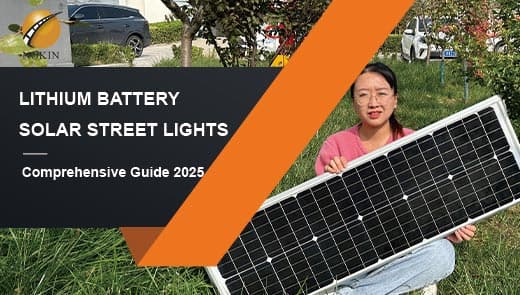How to Choose Proper Outdoor LED Parking Lot Lights?
In the construction and management of parking lots, the selection of outdoor LED parking lot lights has a direct impact on the safety, functionality and economy of parking lots. In this article, we will focus on the importance of parking lot lights, factors to be considered, the best choice points and future development trends to help readers fully understand and make the right decision.
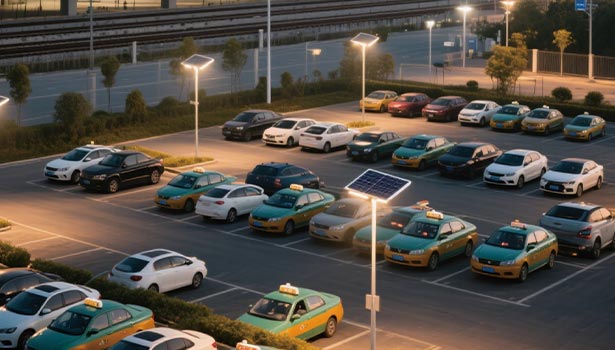
Importance of Parking Lot Lights
Safety and Security Aspects
The primary function of parking lot lights is to provide safety for pedestrians and vehicles. In dimly lit parking lots, the risk of accidents increases significantly, and crime is more likely to occur. Effective lighting allows drivers to spot potential obstacles and pedestrians to be clearly seen. The proper lighting layout also makes it easier for law enforcement officers to patrol and deter crime. The icing on the cake is the use of motion sensor lights, which illuminate only when motion is detected, saving energy and providing the necessary illumination when needed.
Enhancing Visibility and Appearance
Good lighting design is critical to parking lot visibility. The proper placement of lights minimizes shadows and dark corners and ensures a clear line of sight. By using different lighting methods, an even distribution of light can be achieved, avoiding localized over-lighting or over-darkening.
In addition, the aesthetics of the lighting should not be overlooked. Bright and well-designed lighting can enhance the overall image of the parking lot, leaving a good first impression on visitors. Appropriate lighting can also echo with the surrounding buildings and landscape, enhancing the coordination of the environment. Decorative lighting elements, such as illuminated signage or artistic fixtures, can enhance the visual appeal of a parking garage and make it stand out from the competition.
Energy Efficiency and Sustainability
With increasing concern about energy consumption, choosing energy-efficient lighting solutions has become an inevitable trend. Conventional lighting systems often consume large amounts of electricity, which not only increases operating costs, but also has a negative impact on the environment.
|
Lighting Type |
Energy Consumption |
Cost Comparison |
Environmental Benefits |
|
Traditional Lighting |
High |
High operating costs |
High carbon emissions |
|
Solar led street light |
Low, significantly energy-saving |
Lower long-term costs |
Low carbon emissions, more eco-friendly |
Modern lighting technologies, such as LED solar street lights, consume less energy than traditional lighting and provide higher quality lighting, effectively reducing utility bills and carbon emissions. The application of intelligent lighting systems further optimizes energy use by automatically adjusting the brightness according to time of day or foot traffic, ensuring safe lighting while avoiding energy waste, which is in line with the current concept of sustainable development.
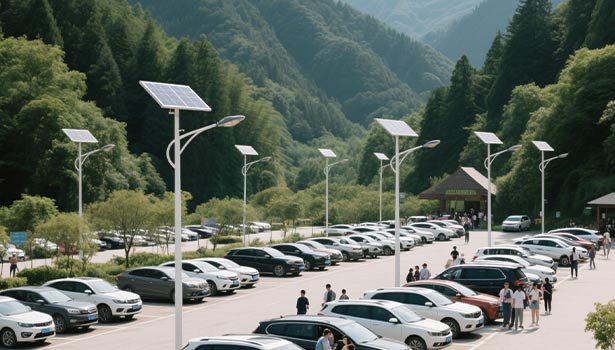
Factors to Consider When Choosing Outdoor LED Parking Lot Lights
General Requirements for Outdoor Parking Lot Lighting
The special environment of outdoor parking lots requires lighting fixtures with good durability and weather resistance, able to withstand extreme temperatures. The special environment of outdoor parking lots requires lighting fixtures with good durability and weather resistance that can withstand extreme temperatures, wind and rain, etc. LED solar street lights have become the preferred choice for outdoor parking lot lighting due to their energy-saving and durability characteristics, which not only reduce operating costs, but also reduce the frequency of maintenance.
Relative Standards-Lux and Light Uniformity
Lighting design must follow industry standard lux levels and light uniformity requirements. For outdoor parking lots, an average illuminance level of 20 - 30 lux and a uniformity ratio (minimum illuminance divided by average illuminance) of at least 0.25 is generally recommended. maintaining uniformity of brightness effectively eliminates dark areas that can pose safety hazards.
Lighting Distribution
Proper lighting distribution should ensure that the entire parking lot is uniformly illuminated while avoiding glare and shadows. Asymmetric or Type III or Type V lighting distribution patterns are often used to achieve broad, even coverage. Luminaires also need to be carefully positioned to minimize light spillage and comply with local light pollution regulations.
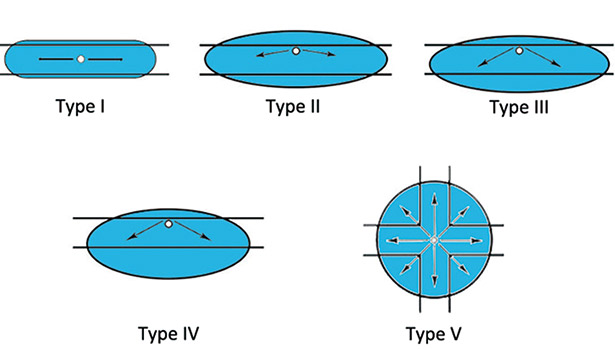
CCT and CRI
Correlated Color Temperature (CCT) and Color Rendering Index (CRI) are key factors in lighting performance. For parking lot lighting, a CCT range of 4000K - 5000K is desirable to provide a bright, natural white light that enhances visibility. A CRI of 70 and above helps to accurately reproduce colors and enhance the sense of security.
Type of Mounting
Depending on the layout and size of the parking lot, pole-mounted, wall-mounted and bracket-mounted luminaires are the main types of installation. Pole mounted lamps with high installation height, suitable for large parking lots, can achieve a wide range of large area, no dead ends of the extensive coverage; wall mounted lamps are more suitable for small or closed space, can use the wall space, in a limited area to provide accurate lighting; bracket mounting high flexibility, according to the actual needs of the adjustment of the installation angle and position, commonly used in areas with special lighting needs.
Pole Position
The reasonable layout and height setting of the pole position has a significant impact on the lighting coverage effect. Poles need to be scientifically distributed to ensure that driveways, parking areas, and entrances and exits are evenly illuminated. Typically, pole heights range from 20 - 40 feet, depending on the size of the parking lot.
Lighting Controls
The addition of a lighting control system can dramatically improve energy efficiency and operational flexibility. Features such as motion sensors, timers, and daylight sensors automatically adjust brightness based on actual activity and natural light conditions. More advanced IoT-connected controls also support remote monitoring and adjustments, so lighting can be adjusted in real time according to actual needs.
How to Choose the Best Outdoor LED Parking Lot Lights?
Type of Lights
Different types of fixtures are suitable for different scenarios.LED Shoebox Lights are suitable for large parking lots, their unique optical design enables large angle light distribution, and when installed on high poles, they can provide even and dead-end-free illumination over a wide area; Floodlights can focus light on key areas such as entrances and exits, curves and other key areas through adjustable-angle lenses for higher lighting intensity; wall-mounted fixtures are suitable for small or enclosed parking lots by virtue of their compact structure, mounted on fences or building facades, and making full use of wall reflections to enhance light efficiency. When selecting a luminaire, it is important to ensure that it provides efficient, glare-free illumination, and that core parameters such as luminous flux and beam angle are matched to the actual needs of the parking lot.
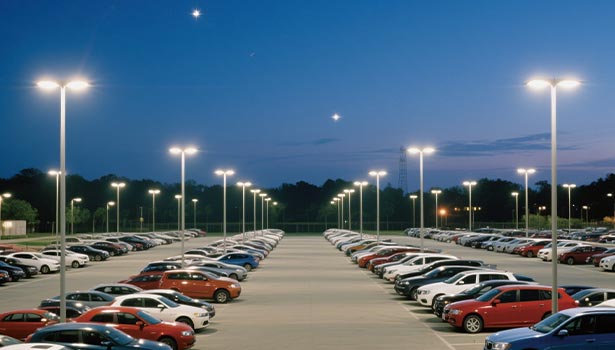
Lumen Output
LED parking lot lights are measured in lumens. Different areas have different needs for lighting brightness. For general areas, it is recommended that the lumen output of each luminaire be between 10,000 - 30,000; for areas requiring higher visibility, such as parking lot entrances and exits, a higher lumen output is required.
Light Distribution
Choosing the right light distribution pattern is the key to ensuring uniform illumination and reducing dark areas. Type III distribution is suitable for the perimeter of the parking lot, while Type V distribution achieves 360-degree uniform illumination and is suitable for the center of the parking lot. Proper light distribution also reduces glare and light pollution, improving comfort and safety.
Color Temperature and CRI
4000K - 5000K color temperature range can provide bright white light, which is the color temperature of this kind of natural light can clearly show the outline and details of objects, so that the license plate, road signs and other key information can be seen at a glance, which greatly enhances the visibility and sense of security. When the CRI reaches 70 and above, it can accurately restore the true color of objects, avoiding visual misjudgment caused by color distortion, making the parking lot environment bright and clear, and bringing better lighting experience.
Durability and Weather Resistance
Outdoor environments are complex and changeable, LED lamps must have good durability and weather resistance. Luminaires with high IP ratings (e.g. IP65 and above) can withstand heavy rain and dust intrusion, ensuring the safety of internal components. Corrosion-resistant aluminum housings are resistant to UV rays and acid rain, and impact-resistant lenses can withstand hail and accidental impacts, enhancing protection in all aspects, extending the life of the fixture, and reducing maintenance costs and replacement frequency.

Future Trends in LED Parking Lot Lighting
IoT Integration
Internet of Things (IoT) technology will drive parking lot lighting to intelligent development. By deploying ambient light sensors, human infrared sensors and network modules, a centralized control system can communicate with LED fixtures in real time. Managers can view the operating status of each light, such as current, voltage, switching time and other data on their cell phones or computers. At the same time, the system can also automatically adjust the lighting strategy based on data analysis, such as reducing the brightness during low-traffic peak hours, to achieve refined energy-saving management.
Predictive Maintenance
Intelligent Lighting System will use predictive algorithms to anticipate maintenance needs and formulate maintenance plans based on the performance data of the luminaires. The system continuously collects data such as light decay, temperature, and failure rate of lamps, and analyzes the trend through machine learning algorithms. Once a lamp is predicted to fail, the system will issue an early warning and generate a maintenance work order, arranging for maintenance personnel to go there with the corresponding accessories to deal with it. This proactive approach to maintenance reduces luminaire failure response time by 60%, significantly reducing maintenance costs and the risk of lighting disruption.
Adaptive Lighting
The LED luminaire of the future will be able to automatically adjust its light distribution pattern and brightness level according to the environmental conditions, traffic flow and foot traffic. On cloudy or hazy days, the luminaires automatically increase their brightness and extend their illumination range; when vehicles are detected or pedestrians are approaching, the luminaires in localized areas are instantly illuminated. In addition, light pollution can be reduced by dynamically adjusting the light distribution. For example, at night, it reduces the amount of light shining upwards to avoid disturbing the neighboring residents, which improves user experience and safety while reducing energy consumption by 30% - 50%.
Integration with Parking Management
Integration of parking lot lighting systems with parking management systems will become a trend. Parking sensors detect parking space occupancy in real time and synchronize the data to the lighting system. When the vehicle enters the parking lot, the system will light up the lamps on the path to the free parking space according to the space occupancy data, creating a “light guidance” effect. At the same time, when the vehicle is parked, the surrounding luminaires automatically reduce their brightness, reducing energy waste. This integration not only reduces the time vehicles spend wandering in the parking lot and reduces congestion, but also improves the intelligent service level and operational efficiency of the parking lot.
Choosing the right outdoor LED parking lot light requires comprehensive consideration of safety, visibility, energy efficiency and many other factors. From luminaire type, lumen output to lighting control, every aspect is critical. At the same time, focusing on the future development trend of LED parking lot lighting will help us layout in advance to realize the intelligent and sustainable development of parking lot lighting system.

